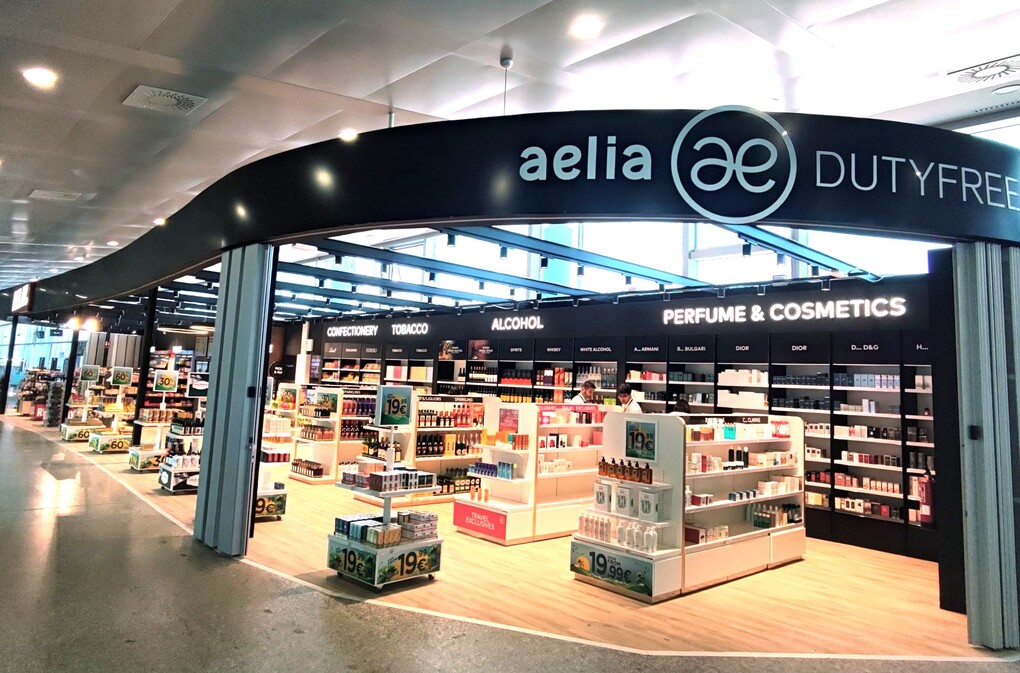 AUSTRALIA/NEW ZEALAND. Ivo Favotto, a Sydney-based executive and company owner who has worked for all three stakeholders in the Trinity chain, presents his latest commentary and figures on the gradual re-emergence of airport commercial activities in Australia and New Zealand. Favotto owns and runs The Mercurius Group a consultancy focused on industry research, consultancy and benchmarking studies, as well as operating his own destination merchandise supply business. This month, he says that concerns over the AstraZeneca vaccine may stall what had been shaping as encouraging progress towards reopening international borders.
AUSTRALIA/NEW ZEALAND. Ivo Favotto, a Sydney-based executive and company owner who has worked for all three stakeholders in the Trinity chain, presents his latest commentary and figures on the gradual re-emergence of airport commercial activities in Australia and New Zealand. Favotto owns and runs The Mercurius Group a consultancy focused on industry research, consultancy and benchmarking studies, as well as operating his own destination merchandise supply business. This month, he says that concerns over the AstraZeneca vaccine may stall what had been shaping as encouraging progress towards reopening international borders.
One thing we have learnt about COVID-19 over the past year has been that for every two steps forward there is usually one step back, sometimes two and every so often three.
So, it is with cautious optimism that we report that across Australia and New Zealand, March 2021 saw a record 56% of travel retail outlets open across both countries.
March 2021 represents the 12th of our monthly reports into travel retail’s ‘recovery’ from COVID-19. In 2019, pre-pandemic, there were 822 travel retail stores across the 27 airports with more than 0.5 million passengers in both Australia and New Zealand.
This means that while there are now 462 stores open, 360 remain closed 12 months after the health crisis saw international and state borders slammed shut.
That 56% of stores are open is reflective of several factors. First is that due to both countries’ ‘island fortress’ mentality and very strict and conservative pandemic management, all state borders in Australia are open and there are no restrictions on the domestic movement in New Zealand.
In both countries, most COVID-related restrictions (on travel, gatherings, sporting events etc) have effectively been lifted. Second is that March is the lead-in period to the Easter and school holiday travel period. Thirdly, the Australian government has started to incentivise travel by offering subsidised airline tickets (being a weaning phase for travel industry as the wider economic wage subsidies ceased at the end of March).
Those choosing to travel do so at their own risk – that is, if the borders close suddenly the cost risk remains with the traveller
Airlines are reporting healthy forward bookings and the travelling public are starting to regain confidence in booking travel without fear of getting stuck in a snap lockdown.
But just as things were starting to look rosier, the pandemic’s knack of dragging us back into the fight has emerged in the form of serious questions about potential side effects of the AstraZeneca vaccine – the main version that both Australia and New Zealand were relying on to vaccinate most of their populations.
Both countries have now switched their reliance to the Pfizer vaccine but the timing of the supply of this alternative has not been resolved. So, in both countries, the timing of the vaccine roll-outs has been much slower than forecast and pushed back to late 2021 and even sometime in 2022.
The delayed vaccine roll-out is a crushing blow to the travel industry’s hopes for the wider re-opening of international borders in both countries. While Australia and New Zealand have agreed on an intra-nation travel bubble, it has been made clear that it could be shut down at any time if there is an outbreak in either country. Moreover, those choosing to travel do so at their own risk – that is, if the borders close suddenly the cost risk remains with the traveller. This makes it tough to see huge numbers willing to take the risk – at least for now.
So, two steps forward but at least one back. And the vaccine roll-out delay may well see international borders remain materially closed for another year – maybe more.
As has been the case since the start of the pandemic, there are more F&B outlets open than specialty retail (60% versus 51%). Unsurprisingly, the rate of re-opening remains higher for domestic terminals than their international equivalents. It is also higher for domestic terminals in New Zealand than those in Australia. However, the absence of material state border closures in recent months has seen Australian domestic terminals catching up with their New Zealand counterparts.

In terms of outlets open per million passengers in domestic terminals in Australia, January 2021 (using the most recent set of passenger statistics) saw an increase to 4.1 outlets/million pax for F&B and 3.7 outlets/million pax compared to December 2020, driven by a drop in passenger numbers versus December (a traditional peak).
This outcome is almost double the pre-pandemic average for domestic airports in Australia of 2.1 F&B outlets/million pax and 1.8 specialty outlets/million pax.
In other words, in January 2021 (compared to late 2019), 63% of domestic terminal outlets were open competing for business from just 30% of the earlier passenger volume. Even this situation is only possible because almost all airports have given their operators flexibility with trading hours and due to the Federal Government’s wage subsidy scheme, Job Keeper. However, the end of Job Keeper on 31 March may impact on operators’ willingness to keep stores open – as we shall see in next month’s report.
The outlets that are open are competing hard for passenger spend and many airports have reported improving passenger spend rates, notwithstanding lower passenger numbers (and hence lower overall sales).

As we have speculated in earlier articles, the travel retail environment is becoming ripe for consolidation. HMSHost appears to be positioning for this internationally as it divests the US motorway business. According to HMSHost President and CEO Steve Johnson the recently announced sale of the business will allow the company “to advance airport food and beverage strategy and reshape our travel dining portfolio”.
With The Mercurius Group’s forthcoming Airport Food & Beverage Study (details coming soon) placing HMSHost in the lower half of the Australia and New Zealand Top 12 F&B operators, local opportunities for industry consolidation may appeal.
Meanwhile the Australasian travel retail industry looks like it will be holding tight on any significant changes to site openings until governments (State and in Australia’s case Federal) can provide more certainty on how they are going to roll out vaccines and respond to localised outbreaks.
There are pockets of good news from Australia and New Zealand – for example very few COVID-19 cases, the easing of day-to-day restrictions and the re-opening of the Australia-New Zealand travel bubble. But for every opportunity for optimism, there are complications, the most recent of which is the delay to the vaccine roll-out in both countries. With at least one step backwards for every two steps forward, it is hard to predict when this whole affair will be over. Until then, the certainty so integral to investment will be hard to find.
The Mercurius Group contact:
Tel: +61 423 564 057;
Email: ifavotto@themercuriusgroup.com;
Website: www.themercuriusgroup.com












